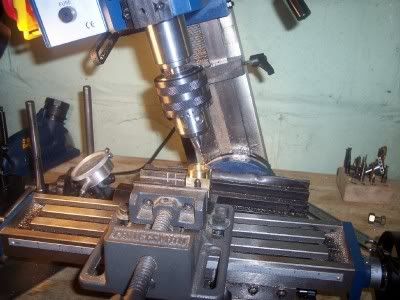B
Bogstandard
Guest
I am just getting to the cylinders and caps on my build of the Mine engine.
I noticed that six seperate sets of 6 radially spaced holes have to be drilled, and they are all the same dimensions.
So I decided to make a little drilling jig that required only one set of precision drilling, and either fitted over the part or the part fitted into it so that these holes can be quickly spotted thru and brought to the right size for drilling or tapping later. To use all that is required when the part is being made is to draw a center line that the jig is eyeballed over to get the holes into the right position.
I have also looked thru a few of Elmers other plans and he seems to use standard dimensions, so this jig should be able to be used with a few more of his designs.
The hole thru the centre is 1/2" +0.002" and the larger hole is 15/16" + 0.002".


John
I noticed that six seperate sets of 6 radially spaced holes have to be drilled, and they are all the same dimensions.
So I decided to make a little drilling jig that required only one set of precision drilling, and either fitted over the part or the part fitted into it so that these holes can be quickly spotted thru and brought to the right size for drilling or tapping later. To use all that is required when the part is being made is to draw a center line that the jig is eyeballed over to get the holes into the right position.
I have also looked thru a few of Elmers other plans and he seems to use standard dimensions, so this jig should be able to be used with a few more of his designs.
The hole thru the centre is 1/2" +0.002" and the larger hole is 15/16" + 0.002".


John





